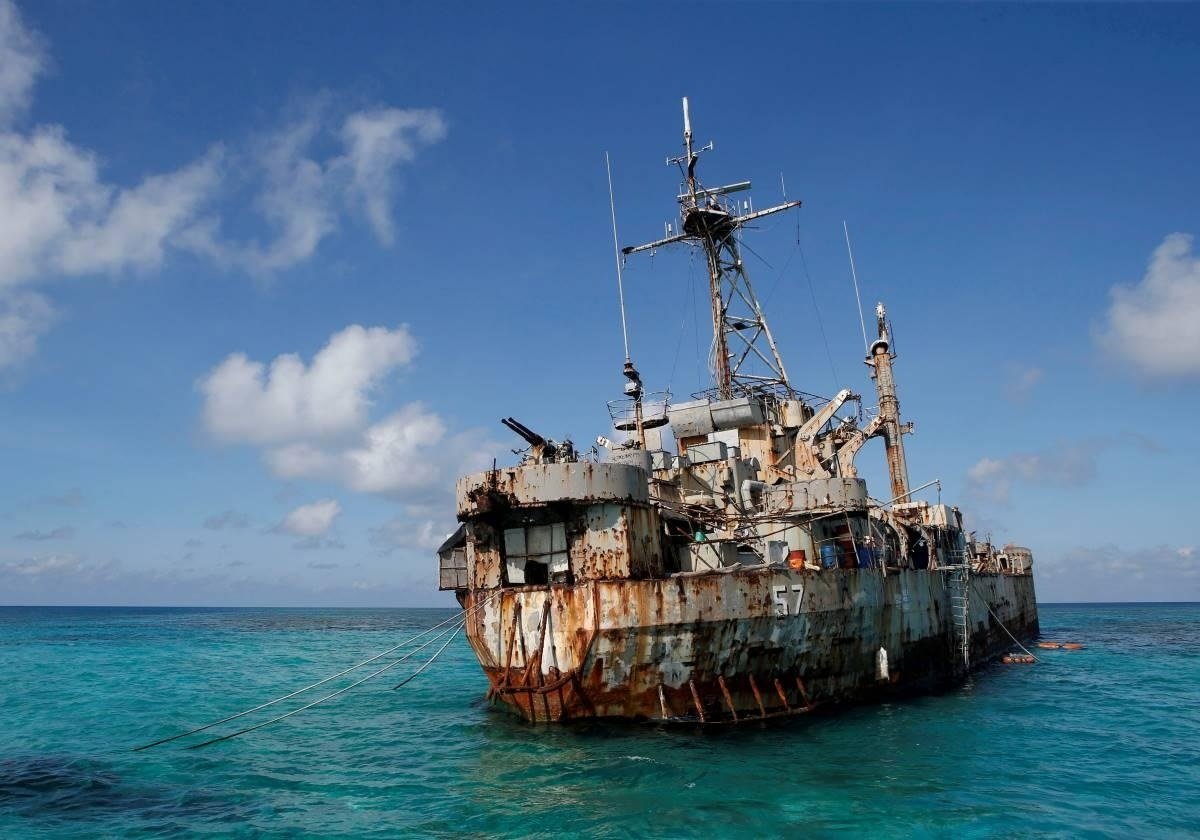China’s defense ministry on Thursday warned the Philippines it would face “consequences” after an encounter last week at Second Thomas Shoal, a South China Sea hot spot.
Newsweek reached out to the Philippine Coast Guard by email with a request for comment.
Why It Matters
Second Thomas Shoal lies about 120 nautical miles (138 miles) west of Palawan, well within the Philippines’ maritime zone. China also lays claim to the reef as part of its sweeping assertions over most of the South China Sea—claims a Hague-based arbitral tribunal rejected in 2016.
The Philippines grounded a former warship, the BRP Sierra Madre, on the shoal in 1999 and has stationed a small garrison of marines aboard ever since. China maintains the vessel’s presence is illegal.
What To Know
At a Chinese defense ministry press conference Thursdsay, spokesperson Colonel Zhang Xiaogang reaffirmed Beijing’s claim to Second Thomas Shoal.
“We solemnly warn the Philippine side not to persist in its misguided actions and repeat its mistakes,” he stated. “It must immediately cease its infringing provocations and inflammatory propaganda. Otherwise, it will bear all consequences.”

Last week the Philippines reported the presence of over two dozen Chinese coast guard and paramilitary ships in the area. China’s coast guard accused Philippine rigid-hulled boats of approaching its vessels “in an unprofessional and dangerous manner.”
From 2023 to mid-2024, Chinese ships regularly attempted to block Philippine resupply missions to the Sierra Madre using water cannons, ramming and close-range maneuvering.
Clashes at the reef ended following a June 2024 confrontation that left several Philippine personnel injured. An agreement between Manila and Beijing was reached that permitted the supply runs provided they didn’t ferry construction materials to the rusting ship.
Zhang also condemned Exercise Alon, a joint amphibious drill hosted last week by the Philippines and Australia, with observers from the United States, Canada and Japan. He accused Manila of “courting external forces” and “playing the fox borrowing the tiger’s might” to destabilize the region.
The Philippines has moved to strengthen defense ties not only with the U.S. but also with other regional partners. Beijing has frequently criticized Manila for inviting in “outside powers” and for acting as what it describes as the pawn in U.S.-led efforts to contain China’s rise.
Tensions have remained high following an August 11 collision between a Chinese navy and coast guard ship, which occurred while they were pursuing a Philippine coast guard vessel at Scarborough Shoal, another South China Sea flash point.
What People Are Saying
General Romeo Brawner, chief of staff of the Philippine armed forces, stated during an August 22 press briefing, per the Philippine Daily Inquirer: “The symbolism of BRP Sierra Madre is that we are asserting our right to our exclusive economic zone. Even if we are just on rubber boats against bigger ships, we will continue to push them outward because we won’t allow them to get close.”
What’s Next
China will almost certainly continue pressing its claims within the Philippine EEZ and will likely continue to face pushback from the Philippines. It is unclear whether China will step up its presence around Second Thomas Shoal more regularly or challenge the next Philippine supply run to the Sierra Madre.
“We need not seek permission from any foreign power, much more from one that has encroached into our exclusive economic zone,” Philippine Navy spokesperson Rear Admiral Roy Vincent Trinidad told Newsweek last week. “These missions will continue.”